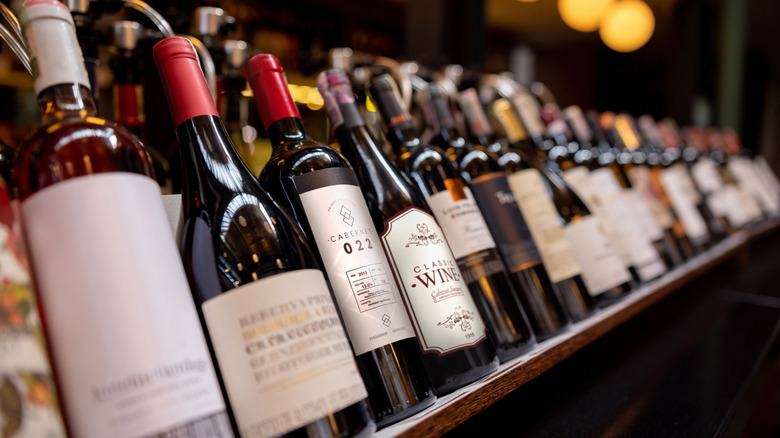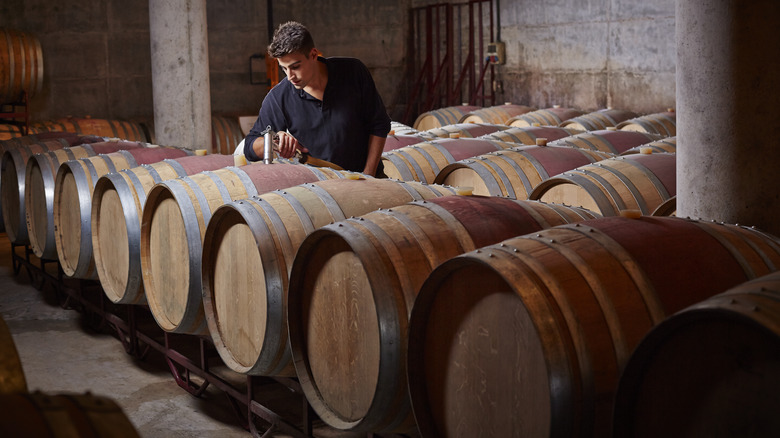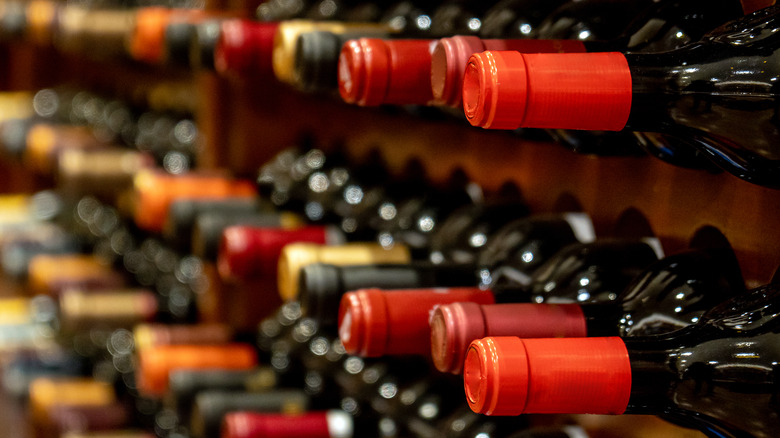What That Reserve Label Means On Your Bottle Of Wine
While trying to score wine deals at Costco – or anywhere else — you've likely noticed the term "reserve" on the labels of some bottles. This special designation often means that the wine has been aged in a specific manner before hitting the market. Historically, winemakers would set aside portions of particularly good batches of wine to be released after further maturity. This tradition — holding back a reserve amount of a given wine batch — is the namesake for the reserve title printed on modern bottles.
While the term certainly evokes a sense of high quality, it doesn't automatically mean the wine is better. In certain regions of major wine-growing countries, like Italy and Spain, the label is legally regulated and can only be applied to wines that have been grown, aged, and stored according to specific rules. However, in much of the world, including the United States, the word reserve is not legally defined, which means it can be used to describe any wine, regardless of aging criteria.
Label requirements
In Italy, reserve (or riserva) wine must fit very specific aging and storage requirements that vary by region. For example, a Chianti can be labeled and sold as a riserva "only after it has been subjected to at least 24 months of aging," which must include "at least 3 months of bottle fining," according to Italian vineyard Carus.
The aging period begins on January 1 after the harvest. Similarly, stringent requirements are used to assess all other Italian wines seeking the riserva label. After meeting the minimum standards, the wine must then match specific characteristics, from color to acidity. These distinct rules ensure that the region exports a standard, high-quality product to the rest of the world.
Similar systems exist in Spain and Portugal, where specialty wine is labeled reserva (different from Italy's riserva). Like Italy, these countries divide their wine-growing areas into regions with exact requirements governing which wines can legally adopt the reserva designation. In addition to storage and aging criteria, Portugal regulates alcohol percentage levels in its reserva bottles. According to an article by wine experts Mike DeSimone and Jeff Jenssen in the Robb Report, Portugal reserva wines must contain 0.5% to 1% more alcohol per bottle compared to their nationally established region minimums.
A meaningless term
Outside of regulated regions, the term reserve isn't well defined and can mean a variety of things — or even nothing at all. In the United States, wine is regulated by the Alcohol and Tobacco Tax and Trade Bureau (TBB) and doesn't currently hold a definition for reserve. In 2010, the TBB put out a proposal to legally define various winemaking terms. However, the new rules were never adopted, and the name reserve continues to be used without a legal definition.
Without any definitive ruling from the federal government, some regions have taken quality requirements into their own hands. At the turn of the century, winemakers in Washington formed the Washington Wine Quality Alliance, which sets its own standards for reserve labels. According to a report at the time by Wine Spectator, members of the alliance agreed to limit their reserve batches to 10% or less of the overall production. Outside of Washington, vineyards in the United States still market certain bottles with the reserve label. But, because there is no uniform agreement on what actually constitutes a reserve bottle, it is often used as a mere marketing ploy with no legal consequences.


